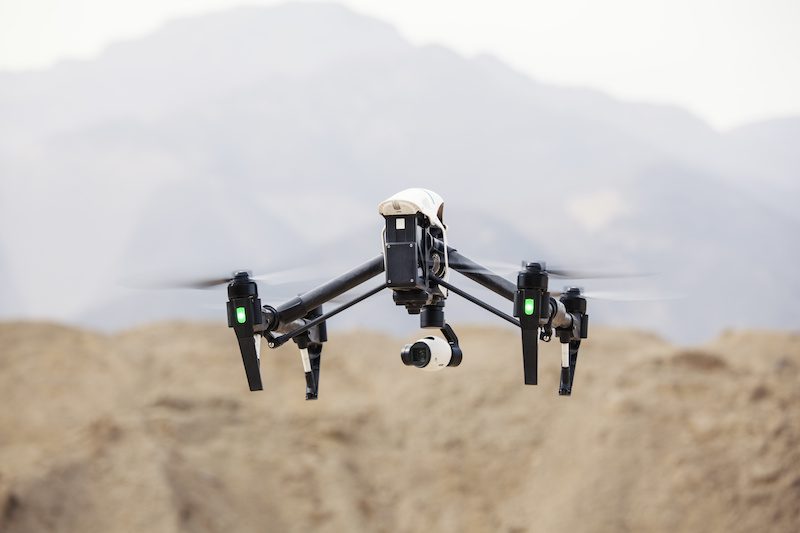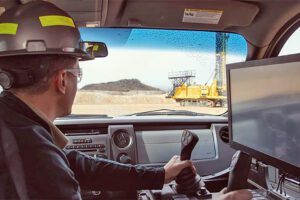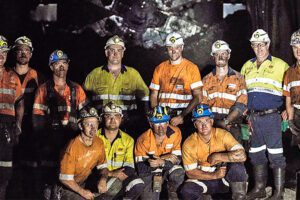When it comes to operating a drone safely on a mine site, there’s plenty of risks to consider, according to a drone industry expert.
At this week’s Resources Training Council Conference, Dr Joel Spencer from the Institute of Drone Technology, said that the drone industry is emerging at a rapid rate and, companies should consider the implications for use on mining sites.
Dr Spencer told the conference that the Drone Industry is now worth around 127 Billion dollars worldwide and whether we like it or not, they will be impacting our lives in the very near future.
He explained that a range of semi-autonomous drones are now operating all across Australia. There are seabourne, underwater robots, ground based robots (currently in use by Australia Post).
He said “We need to think more than aerial robots when it come to drones.”
From a safety perspective, Dr Spencer said drones were like flying chainsaws and they presented significant risks to personnel if they were not managed correctly. He said “You wouldn’t operate a chainsaw on a mine site without appropriate certification, and that should also apply to drones.”
Drones are like flying chainsaws
Mining is typically using vertical take-off drones for applications in:
- Work at heights / inspection at heights
- Confined space
- Stope Inspections
- Situational awareness – keeping a view of operations
- Benches and walls
- Mapping & Survey exploration
- Blast monitoring
- Emergency response
- Site safety
- Asset inspection
- Blast plume monitoring
- Emergency response
Dr Spencer said drones came with increased efficiency, but we must consider a range of aspects of safe operation. Mine sites should seek to understand that the same Duty of Care obligations apply to drones.
Sites need to recognise a range of key issues around Drones including issues associated with:
- Duty of care;
- Who is managing them – understand that they can be dangerous machines;
- Having a management platform for control;
- Support innovation in the use of Drones – get the best out of them and make sure they’re safe.
Dr Spencer said that by establishing baselines around organisational capability, provision of training to users/supervisors and bystanders for situational awareness and, continually monitoring processes and updating systems we can use drones safely at a mine site
Drones will change – tech will change – we need to therefore be ready to change and modify our systems as the drones change.
Dr Spencer also suggested to the conference delegates that a framework for training operators on-site should include a Drone induction program that would include key topics like human factors – airmanship, fatigue, communicating in flight operations, Local policies and Procedures, Electrical and electronic systems – focus around batteries, operation rules risk assessment, airworthiness, equip and sensors, what you can and cant do as a drone operator at that site.
He told the Conference that Site Managers should also understand their legal responsibilities, capabilities of drone tech, insurance obligations and when to insource or outsource the use of drones.
Australia has 150K drones that operate already but the numbers are estimated only because the Civil Aviation Safety Authority doesn’t monitor sales. According to CASA records, around 41 Companies were being authorised to fly drones per fortnight in Australia.
Drone tech is here because its utility is now proven across mining sites. It will increase rapidly. Dr Spencer said that the sub 2kg creates disorderly integration. RULES were built for aviation not workplaces – NOT Mining
He said the “The severe lack of workplace policies around drone use was an opportunity rather than a problem. By creating safe use frameworks, ensuring competence based training is conducted and ensuring that organisations could innovate into the future, drones will be here to safely integrate into our operations.”
But he cautioned “There is no ready standard of best practice because it is so new. Companies must be prepared to innovate and provide a safe capability base for innovation to minimise risks and maximise operational efficiencies.”
Read more Mining Safety News














Add Comment